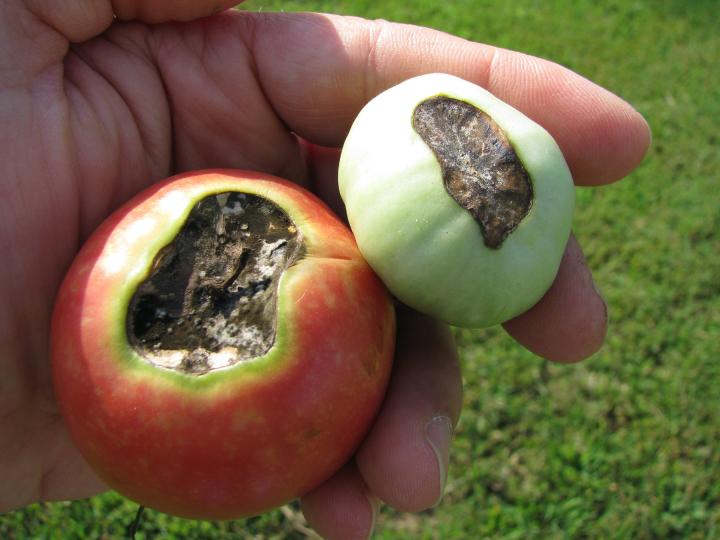
What To Do When You See Blossom-End Rot
ADVERTISEMENT
As mentioned above, blossom-end rot is a condition caused by a lack of calcium. Unfortunately, the rot will not go away once a fruit is already affected, but following the advice below can stop the rot from progressing further and from affecting other developing fruit.
Thanks for the Tomato growing info~
First, choose vegetable cultivars that are tolerant of calcium deficiencies and less likely to show blossom-end rot symptoms.
Inconsistent watering is the main cause of calcium deficiency. Avoid watering your plants too much or too little. Instead, water consistently and evenly. If you forget to water, do not overwater. If it’s rainy, ensure plants have good drainage and the soil dries out (but do not cease to water completely). Overall, plants need about 1 inch of water (about 0.6 gallons) per square foot per week.
Use mulches to retain soil moisture during dry periods.
At the first sign of blossom end rot, I crush one calcium based antacid tablet (such as Tums, or I use the cheaper generic brand that comes in large bottles) in just enough water to dissolve it and pour at the base of the tomato/pepper/eggplant vine. The rest of the fruit then is fine. I've used this method for years.
How often do you do this treatment. Weekly, monthly? How often do you water your plants during July and August?
Just one application?
Thanks.
I was told to use Epsom Salt to help with blossom rot on my tomatoes
I use ground egg shells. I just haven’t figured out how much to use. I have two 64 ounce jars and a 32 ounce jar ground fine.
That’s magnesium so act makes it worse
For both the chickens and the planters, I crush shells a bit and then roast them slowly in the oven until browned. Crush a bit more and sprinkle in coop or potting soil I mix from a local plant nursery and a water treatment plant residue called 'sludge'...shells will keep slugs down in the planters and provides calcium to the chickens among it's other benefits.
Calcium Nitrate 15.5-0-0 a tspn/gal per week after fruiting starts is worth a try.
I grind egg shells in my coffee grinder and spread them in the dirt and around the base of the tomato plants. In the dirt provides the need calcium; around the base is a deterrent to any bugs. I also give all my vegetables a good dose of used coffee grounds.











